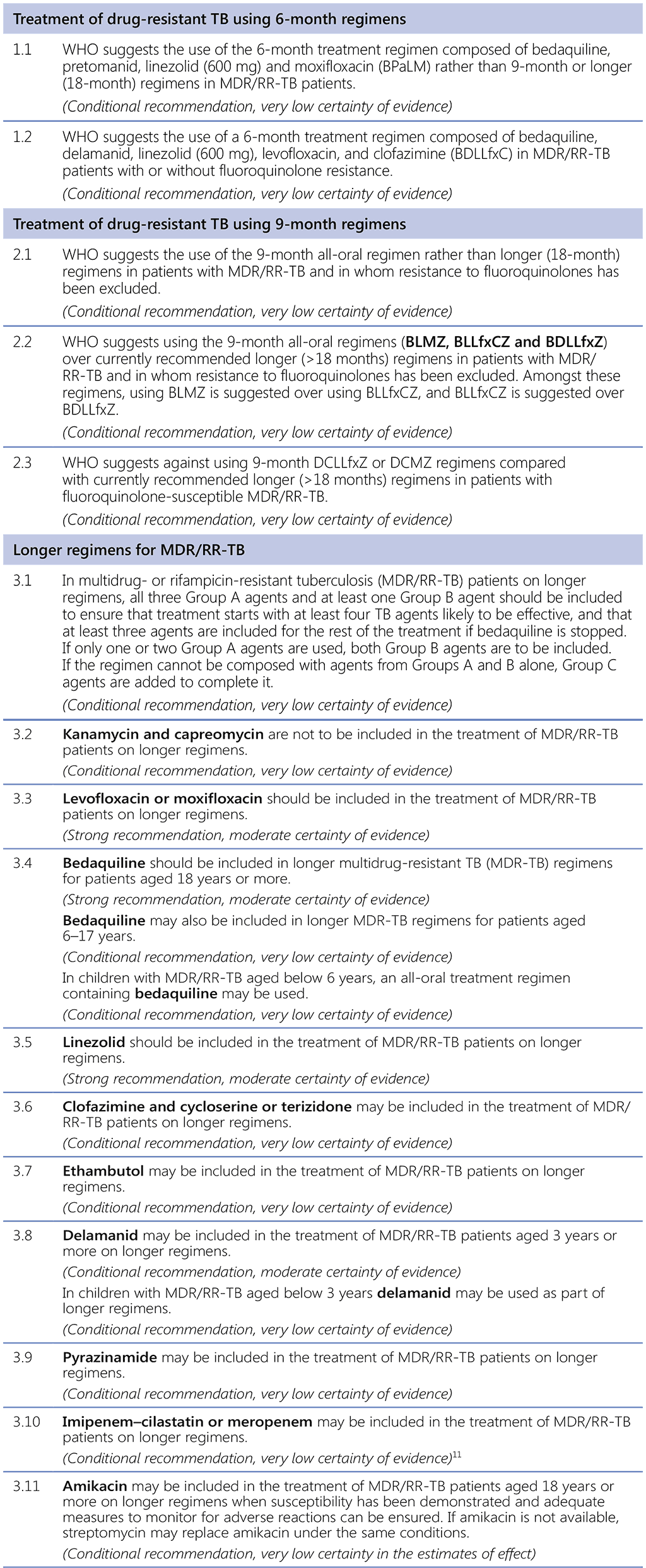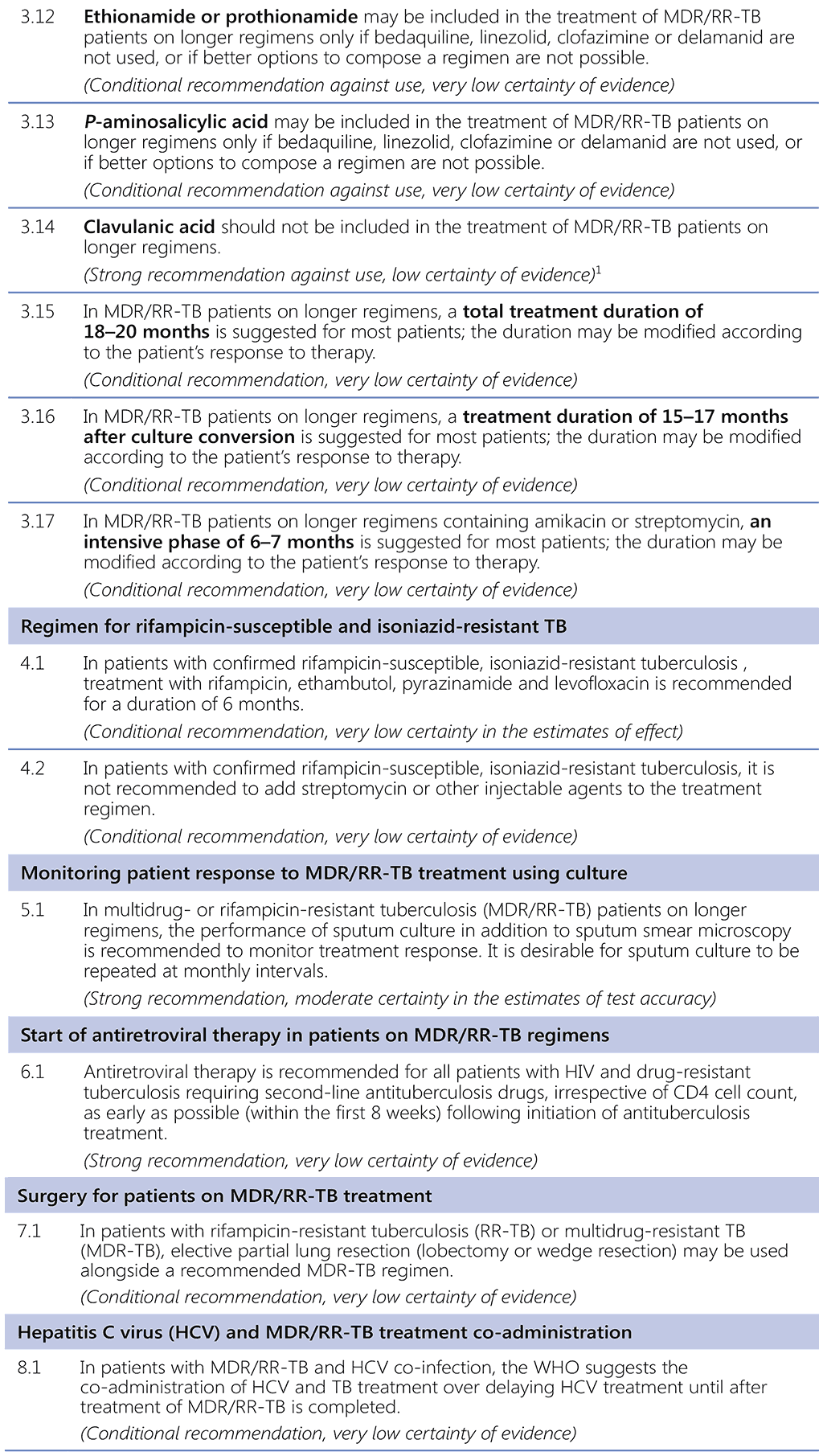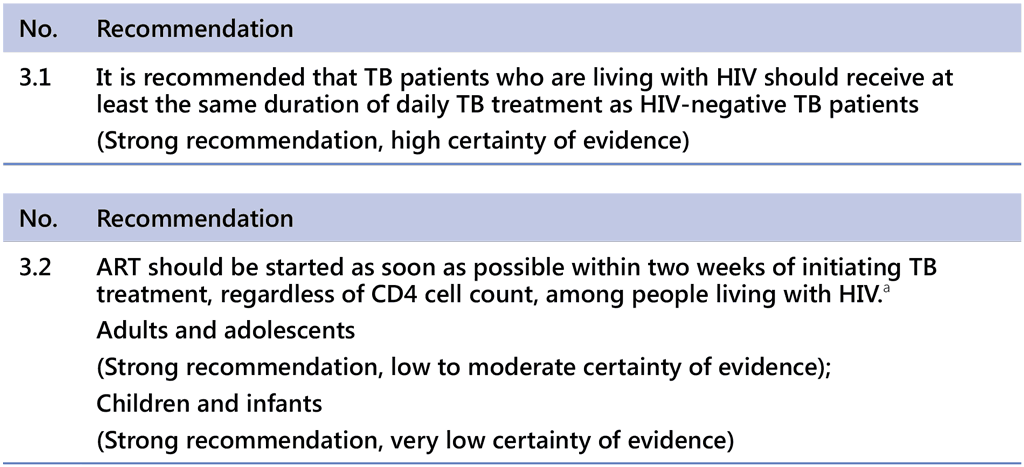3. Key considerations in DR-TB treatment
3.1 Access to DST
The current guidelines for treatment of DR-TB stress the need for access to reliable, quality-assured DST, to be provided by NTPs and associated laboratories, to inform the use of the WHO-recommended regimens. Rapid molecular testing is making it increasingly feasible for NTPs to quickly detect MDR/RR-TB and other types of resistance, and to use the results to guide treatment decisions (5, 6).

 Feedback
Feedback


